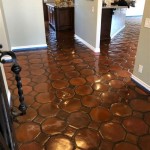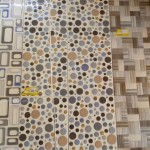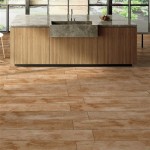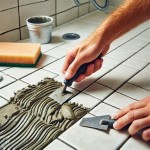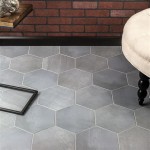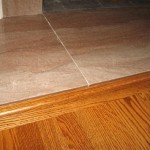The Beauty of Travertine Trim Tiles in Shower Areas
Travertine, a form of limestone deposited by mineral springs, has been a favored building material for centuries. Its natural beauty, characterized by distinctive textures and warm color palettes, has made it a popular choice for both interior and exterior design. In modern bathrooms, travertine trim tiles are increasingly utilized to enhance the aesthetic appeal and functionality of shower areas.
The incorporation of travertine trim tiles in shower design goes beyond mere decoration. These tiles serve practical purposes such as defining boundaries, creating visual interest, and protecting vulnerable areas from moisture damage. The inherent qualities of travertine, including its porosity and durability, contribute to its suitability for this application. Understanding the benefits, design considerations, and maintenance requirements associated with travertine trim tiles is crucial for achieving optimal results in shower installations.
Enhancing Aesthetics and Design Versatility
One of the primary reasons for utilizing travertine trim tiles in showers is their ability to elevate the overall aesthetic. The unique veining and color variations found in travertine add a touch of natural elegance and sophistication to the space. Unlike more uniform materials, travertine offers a distinctive character that can complement a variety of design styles, from rustic and traditional to contemporary and minimalist.
Travertine trim tiles are available in a multitude of sizes and shapes, providing designers with considerable flexibility in creating custom shower designs. These options allow for the creation of intricate patterns, borders, and accents that can enhance the visual appeal of the shower area. Bullnose edges, for instance, provide a smooth, rounded finish that adds a touch of refinement while also preventing sharp edges. Pencil liners, thin strips of travertine, can be used to accentuate transitions between different tile types or to create decorative bands.
The natural color palette of travertine, ranging from creamy ivory to warm beige and rich browns, blends seamlessly with various color schemes. This versatility makes it easy to integrate travertine trim tiles into existing bathroom designs or to create a cohesive look from the ground up. Darker shades of travertine can add depth and drama, while lighter tones create a sense of airiness and brightness. The choice of travertine color also influences the overall mood and atmosphere of the shower area.
Beyond the color, the texture of travertine plays a significant role in its aesthetic appeal. Travertine can be honed, polished, filled, or tumbled to achieve different surface finishes. Honed travertine has a smooth, matte finish that provides a non-slip surface, making it a practical choice for shower floors and benches. Polished travertine has a glossy sheen that reflects light and adds a touch of luxury. Filled travertine has its natural pores filled with epoxy or cement, creating a uniform surface. Tumbled travertine has a rustic, textured finish that adds character and charm. The selection of the appropriate travertine finish depends on the desired aesthetic and functional requirements of the shower area.
Practical Benefits and Functionality
Beyond its aesthetic appeal, travertine trim tiles offer several practical benefits that make them a desirable choice for shower areas. Their durability and water resistance contribute to the longevity and performance of the shower enclosure.
Travertine is a relatively hard and durable material that can withstand the daily wear and tear associated with shower use. When properly installed and sealed, it is resistant to cracking, chipping, and scratching. This durability ensures that the travertine trim tiles will maintain their appearance and structural integrity for many years, reducing the need for frequent repairs or replacements. Properly maintained travertine can last for decades, making it a cost-effective investment in the long run.
While travertine is naturally porous, it can be effectively sealed to prevent water penetration. Sealing the travertine creates a barrier that protects the stone from moisture damage, staining, and mildew growth. Regular sealing is essential for maintaining the integrity of the travertine and preventing potential problems such as water damage and discoloration. The frequency of sealing depends on the type of sealer used and the level of shower usage. High-quality sealers can provide years of protection with minimal maintenance.
Travertine trim tiles can also be used to create functional elements within the shower area. For example, they can define the edges of shower niches, providing a clean and finished look. They can also be used to create shower benches or curbs, adding comfort and convenience to the showering experience. The use of travertine trim tiles in these applications not only enhances the aesthetic but also contributes to the overall functionality of the shower area.
Furthermore, travertine trim tiles can be used to address specific design challenges in the shower area. For instance, they can be used to conceal plumbing fixtures or to transition between different wall surfaces. Their versatility allows for creative solutions that enhance both the form and function of the shower.
Installation and Maintenance Considerations
Proper installation and regular maintenance are crucial for maximizing the beauty and longevity of travertine trim tiles in shower areas. Following industry best practices and using appropriate materials will ensure a successful installation that will last for years to come.
The installation process begins with proper surface preparation. The substrate must be clean, level, and stable to ensure that the travertine tiles adhere properly. A waterproof membrane should be installed behind the tiles to prevent water penetration into the wall structure. This membrane is essential for protecting the underlying structure from moisture damage and preventing mold growth. Installing a quality waterproofing membrane is a critical step often overlooked but essential to prevent bigger problems down the line.
The travertine tiles should be installed using a high-quality thin-set mortar specifically designed for natural stone. The mortar should be applied evenly and in sufficient quantity to ensure proper adhesion. Spacers should be used to maintain consistent grout lines between the tiles. These consistent grout lines contribute to the overall aesthetic and allows for proper expansion and contraction of the tiles. The specific size of the spacers depends on the size and style of the travertine trim tiles being installed.
After the tiles are installed, the grout lines should be filled with a waterproof grout. The grout should be carefully applied to ensure that all spaces are filled completely. Excess grout should be wiped away promptly to prevent staining. Selecting the right type of grout is vital. Epoxy grout is more water resistant and stain resistant compared to cementious grout, making it ideal for shower areas. The grout should be cured following the manufacturer's instructions before the travertine is sealed.
Sealing is an essential step in protecting travertine from water damage, staining, and mildew growth. A penetrating sealer should be applied to the clean, dry travertine surface. The sealer should be allowed to penetrate the stone for the recommended amount of time before any excess is wiped away. The frequency of sealing depends on the type of sealer used and the level of shower usage. Typically, resealing is recommended every one to two years.
Regular cleaning and maintenance are essential for keeping travertine trim tiles looking their best. The tiles should be cleaned regularly with a pH-neutral cleaner specifically designed for natural stone. Avoid using harsh chemicals or abrasive cleaners, as they can damage the travertine surface. Wiping down the tiles after each shower can help prevent the buildup of soap scum and mildew. Periodically inspecting the grout lines and resealing as needed can also help maintain the integrity of the shower area. Addressing minor issues promptly can prevent them from escalating into more significant problems.

Travertine Tile 12 Reasons Why You Should Consider It For Your Home Page Country Floors Of America Llc

Travertine Tile For Floors More The

Timeless Travertine What Makes Natural Tiling So

Travertine Tile Shower Design Ideas

Travertine Tile Secrets Floor Installation

Travertine Shower Design Ideas

Large Travertine 1m Shower Wall Panelling

Travertine Tile Shower Design Ideas

Travertine Mosaic Tile The

Ids Showerwall Panels Travertine Gloss Bathroom City
Related Posts

